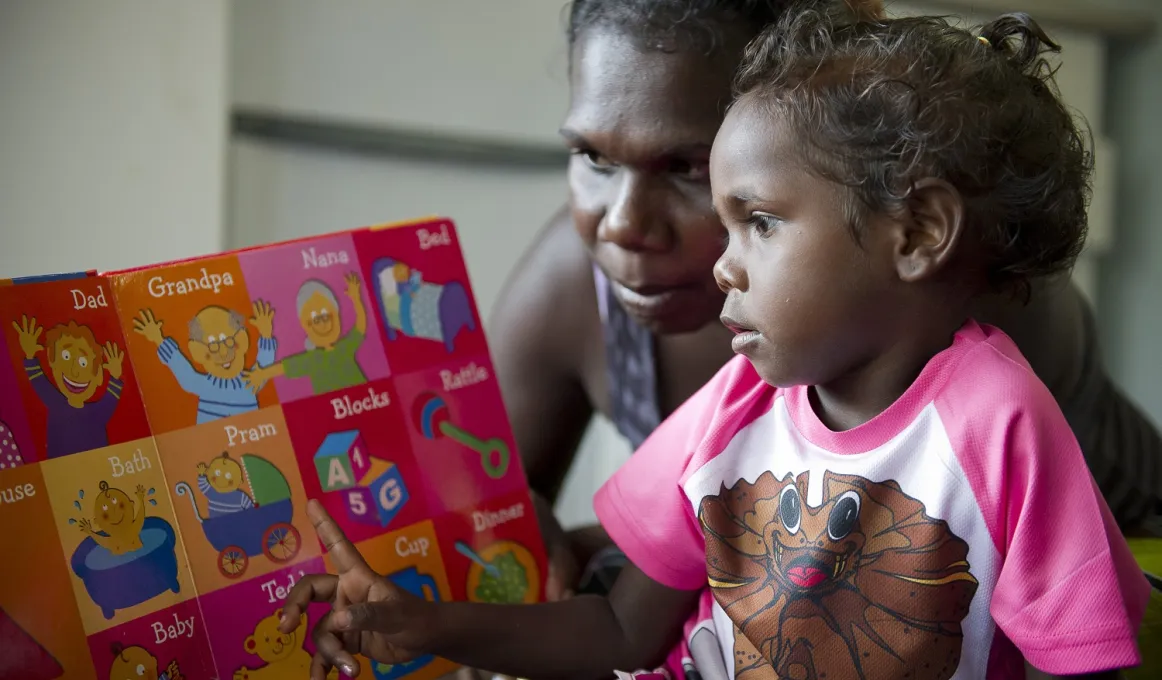Lifting literacy levels and instilling a lifelong love of reading

Indigenous Literacy Day is a national celebration of Indigenous cultures, stories and languages. It is also designed to lift literacy levels and a love of reading amongst Indigenous children and adults.
Each year, 4 September marks Indigenous Literacy Day, a national celebration of Indigenous cultures, stories, languages and literacy.
An initiative of the Indigenous Literacy Foundation (ILF), this celebration involves around 700 registered participants (libraries, schools, businesses, booksellers and individuals) participating in fundraising and literacy activities.
This year the ILF is launching a series of nine new children’s books written and illustrated by Binjari women in their first language Kriol. They include three board books, three picture books and three chapter books. One book, Moli det bigibigi (Molly the Pig) is about a Weetbix-devouring pig and will be available through bookshops nationally.
Also launched this day is Deadly Sisters of Worawa which was written by students from Worawa Aboriginal College under the guidance of author Dr Anita Heiss and Shelley Ware.
The ILF aims to reduce the disadvantage experienced by children in remote Indigenous communities across Australia by lifting literacy levels and instilling a love of reading.
Karen Williams is the ILF Executive Director.
‘Can you imagine not being able to read,’ Karen said.
‘We believe every child in Australia should have ready access to books, regardless of how remote their home or school are.’
But books require funding so on this day, the ILF is calling on all Australians to participate in their new fundraising campaign, Fill a Bookshelf.
Australians can sign up for an online virtual bookshelf where friends and family can ‘buy’ a book on the shelf. Each book purchased is a donation which goes straight back into buying books for the Indigenous communities who otherwise have few to none in their homes.
Only 35% of Indigenous year five children in very remote Northern Territory communities meet the minimum standards for reading and writing, compared to 90% of non-Indigenous students living in major cities (NAPLAN, 2017).
This year the ILF hopes to raise $300,000 on Indigenous Literacy Day to gift over 30,000 new books to remote Indigenous communities.
Find out more
The Australian Government has provided $10 million of funding over four years to protect, preserve and celebrate Aboriginal and Torres Strait Islander languages. This is in addition to $20 million per year funding provided under the Indigenous Languages and Arts program.
The Indigenous Literary Foundation is a national charity and does not receive government or major corporate funding. It raises funds through donations from private groups and individuals, and 'in kind' support from the Australian Book Industry.